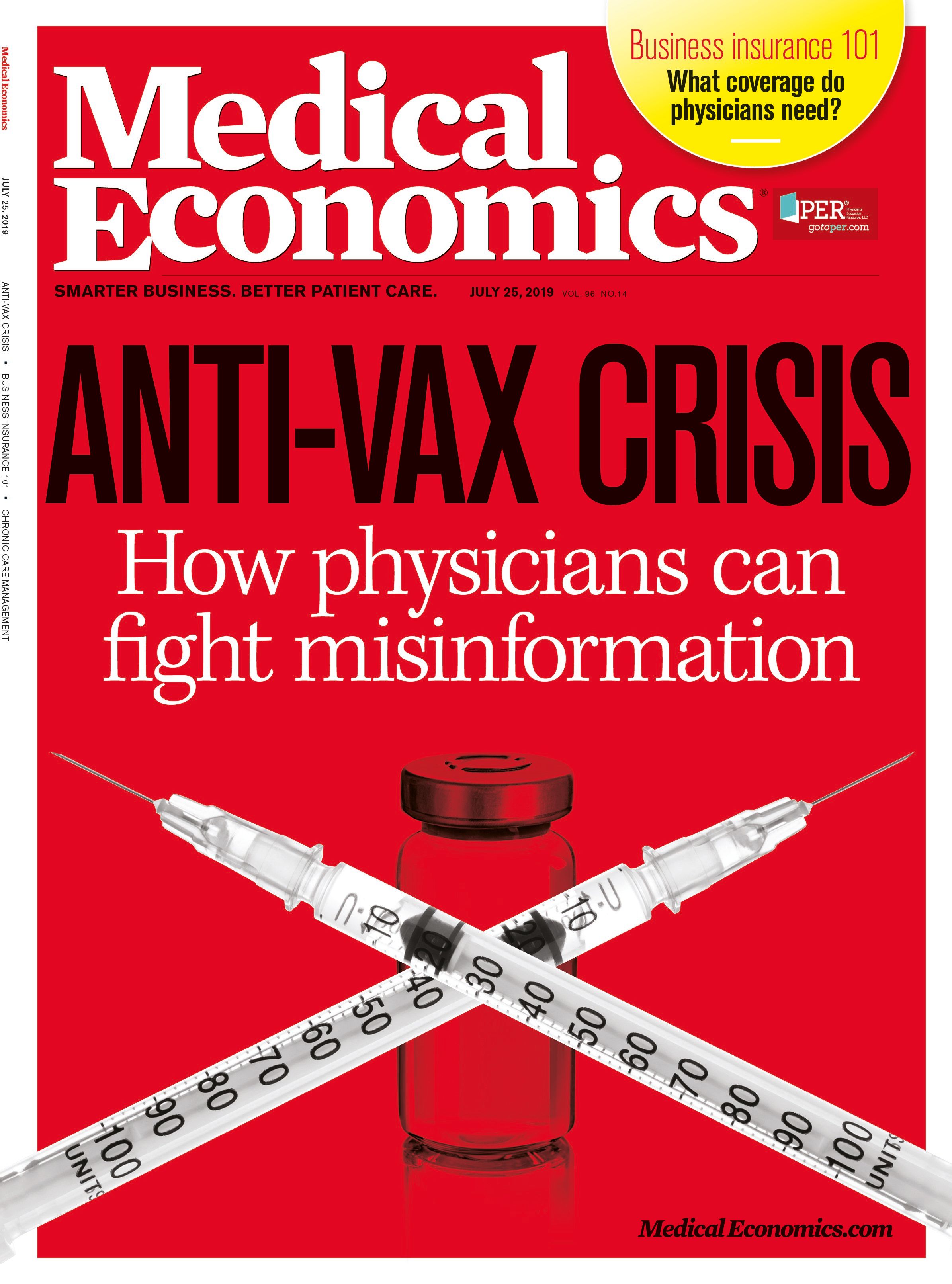Publication
Article
Medical Economics Journal
What’s being done to stop EHR data blocking?
Author(s):
The federal government is pushing forward with regulatory action that it hopes will end data blocking and promote more sharing of patient information.

The federal government is pushing forward with regulatory action that it hopes will end data blocking and promote more sharing of patient information.
The latest move on this front came in February, when the Office of the National Coordinator for Health Information Technology issued its proposals for implementing the provisions against information blocking that were laid out in the 21st Century Cures Act.More specifically, ONC is defining what does and does not constitute information blocking by detailing the seven specific scenarios it believes are legitimate reasons for clinicians withholding electronic health information (EHI).
Experts say they see ONC’s move as signaling clinicians to more readily share EHI in all circumstances except for theseven exceptions it is outlining-a message that experts believe has the potential to greatly improve the free flow of patient data needed to ensure the best quality of care.
“This is a big deal for providers, because you can’t be successful in the world of value-based care if you don’t have good information,” says Joel White, executive director of the Health Innovation Alliance (formerly Health IT Now), a nonprofit group promoting the use of information technology in healthcare.
Data blocking Exceptions
The Cures Act, passed in December 2016, seeks to encourage freer flow of EHI. To do that, the act tasked the U.S. Department of Health and Human Services, of which ONC is a part, with establishing the limited scenarios under which clinicians could withhold sharing of EHI.
ONC in March published the details of the seven activities that it says should not be considered information blocking. HHS is accepting public comments on this proposal through June 30 before finalizing the regulations.
ONC proposes that clinicians are not engaged in information blocking if they are
- preventing harm
- promoting the privacy of EHI
- promoting the security of EHI
- recovering costs reasonably incurred
- responding to requests that are infeasible
- licensing of interoperability elements on reasonable and nondiscriminatory terms
- maintaining and improving health IT performance.
ONC also established the conditions clinicians would have to meet under each of those seven scenarios to show that they’re not engaged in information blocking.
What is information blocking?
Information blocking (sometimes also called data blocking) happens for various reasons related to policy decisions, business practices, and technical challenges, says Jeffery Smith, M.P.P., vice president of public policy with the American Medical Informatics Association.
In some cases, clinicians aren’t sharing information because their computer systems cannot exchange patient data with other systemsbecause of technology barriers. This represents a lack of interoperability, which experts say remains one of the most common reasons why information isn’t freely flowing. Moreover many clinicians, especially in small, independent practices, find that the costs of implementing the technologies needed to create interoperability are prohibitively high.
In other cases, clinicians are not sharing patient data because they incorrectly believe that the Health Insurance Portability and Accountability Act (HIPAA) prohibits them from doing so. Similarly, some clinicians may not be sharing patient data because doing so could violate other government privacy policies. For example, Smith says, some states require clinicians to get a patient’s consent before they can share information about the patient’s HIV/AIDS status.
Meanwhile, business policies can block the exchange of patient data, White says. Some clinicians may not readily share-or share at all-any patient information with clinicians outside their healthcare system in order to keep patients within their own institution.
Vendor policies can also block information sharing, experts say, as some clinicians find that when they want to switch electronic health record (EHR) vendors they have to pay steep fees to their former vendor to have the patient data transferred.
Information blocking is not a new problem, he adds. White recalls working with clinicians in an emergency department in 2011 that couldn’t get needed EHI from a radiology department within its own healthcare system even though both were using the same EHR system. The reason? The radiologists had closed its application programming interface (API), a software tool that allows information to flow from one source to another.
Impact of proposed ONC rule
The proposed ONC rule outlining the seven allowable reasons for not sharing data could go into effect in some form later this year, after ONC reviews the comments it receives and makes any changes.
Although health IT advocates say the government efforts could indeed promote more sharing of patient data, some also worry that the rules could be confusing, cumbersome, or costly-and possibly all three-for physicians. “These may create new challenges and overhead costs for healthcare providers. It could create new burdens,” White says.
As a result, the Health Innovation Alliance has cautioned ONC against implementing its proposal. In a March 25 statement, White said: “Patients and taxpayers have waited years for regulators to act to end information blocking because it threatens patient safety, raises health costs, and adds to provider burden and burnout. ONC’s own numbers show that we could save more than $3 billion in provider hours by getting this right, so we must not settle for weak rules that add to the regulatory headache facing doctors without delivering on their promises.”
However, White further stated that while ONC is making progress in fulfilling the promise of increased data sharing as envisioned by the 21st Century Cures Act, the organization believes the proposed rules do not do enough to counteract information blocking.
Meanwhile, the AMA and several industry organizations successfully lobbied for ONC to extend its comment period from early May to the end of June. An AMA spokesman said the organization has concerns over other areas that impact the flow of data. The AMA has specifically cited excessive fees to connect EHRs to each other and with other health IT; the technical limitations vendors use to limit data made available by their APIs, and EHR vendor contractual roadblocks that restrict physicians from freely choosing which software or service to use.
Similarly, Robert Tennant, MA, director of health IT policy for the Medical Group Management Association, says it’s unclear to what extent the ONC proposal will enable more data sharing among physicians and others. For example, Tennant points to the exception regarding “reasonable fees” and wonders if it will mean that many physicians will continue to face prohibitively high costs from vendors.
“ONC uses the term ‘reasonable fee,’ but reasonable isn’t a technical term. And while ONC might have some oversight over the term ‘reasonable,’ I think physician practices at the end of the day will be the ones who are going to pay for this,” he says. “I think the cost is going to continue to be a barrier, particularly for primary care physicians who don’t have a lot of extra money to spend on technology.”
Recommended actions
Tennant recommends physicians review their practice policies and procedures to make sure there’s nothing in them that unnecessarily blocks the transfer of patient data.
He also advises physicians to talk to their EHR vendors about when their products will be 2015-certified – if they’re not already – according to the standards set by CMS, as 2015 certification requires APIs to promote interoperability.
Physicians should also talk to other physicians as well as representatives from professional associations and Health Infromation Exchanges (HIEs) to ensure they’re keeping pace with best practices and technology innovations that promote information sharing.
“If physicians can get the right technology in place and fit it into their workflow so that they can share information,” Tennant says, “it could mean a lot of better data in the hands of the physician-and that means better healthcare for their patients.”






